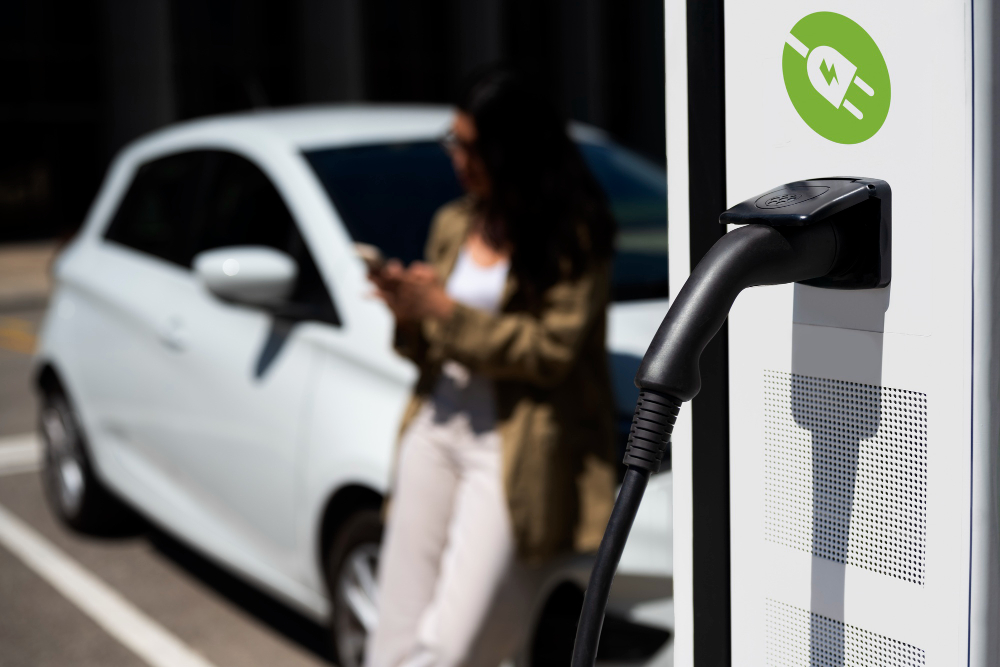Is It Worth Financing Your Electric Car in America?
Electric vehicles (EVs) are now on the streets, in dealership showrooms, and on the balance sheets of American banks.
The so-called “EV credit boom” is reshaping the auto financing market, bringing exciting opportunities for consumers, financial institutions, and the green economy itself.

But along with the promises come the risks. So—is it worth it?
The Rise of EVs and the Credit Explosion
According to data from Kelley Blue Book, over 1.2 million electric vehicles were sold in 2023, representing about 8% of all new car sales in the country.
This accelerated expansion would not be possible without massive support from consumer credit.
According to Experian, around 80% of EVs are purchased through financing.
With the average price of a new EV hovering around $55,000, compared to about $48,000 for a conventional car, many consumers are turning to larger loans with longer terms.
Tax Incentives and Market Distortions
One of the key pillars sustaining EV growth in the U.S. is the federal government’s tax incentive package, especially the up to $7,500 credit included in the Inflation Reduction Act (IRA).
These incentives, applicable to certain models and conditions, have made EVs more affordable to a broader segment of the population.
However, these subsidies also create distortions in the market, such as heavy consumer dependence to make purchases viable.
If these incentives are reduced or suspended—as some political groups have begun to discuss—there could be a direct impact on consumers’ ability to repay their loans.
The Declining Residual Value of EVs
Another troubling factor is the rapid depreciation of electric vehicles. Unlike combustion engine cars, EVs still face technological and market challenges that hurt their resale value.
The constant evolution of battery technology, for example, quickly renders older models obsolete.
In addition, the perception that battery maintenance or replacement is expensive further reduces the appeal of used EVs.
For the credit market, this represents a significant risk. In the case of loan defaults and vehicle repossessions, the resale value may not cover the outstanding loan balance.
This possibility of “negative equity” is a concern for banks and is already leading some lenders to tighten approval criteria for EV financing.
Consumer Profiles and Default Risk
Initially, most EV buyers were high-income consumers—more likely to stay current on loan payments.
However, as access has expanded and incentives have grown, the customer base has diversified, especially with the growing mainstream trend.
This is a positive development in terms of accessibility, but it also demands more caution from financial institutions.
The increase in middle-class buyers or borrowers with weaker credit histories could lead to higher default rates, especially if macroeconomic conditions shift, such as rising interest rates or an economic slowdown.
The Role of Automakers and Fintechs
Companies like Tesla, Rivian, and even Ford are offering direct financing—often at more attractive rates than conventional banks.
Additionally, fintechs specializing in green credit are gaining ground, offering digital and sustainable solutions for EV financing.
This movement increases competition and can benefit consumers—with lower interest rates and faster approval processes.
Rewards and Opportunities
It stimulates the electric mobility supply chain, fuels innovation, creates jobs, and supports sustainability goals.
Accessible financing enables more people to adopt electric vehicles, cutting carbon emissions and accelerating the energy transition.
For investors, this market could also be a gold mine. EV-backed securities are increasingly sought after in financial markets, attracting capital to the sector.
However, the long-term viability of these investments will depend on credit performance, regulatory frameworks, and stable resale values.
Paths to Responsible Growth
The future of EV credit in the U.S. will depend on stable public policy, regulatory innovation, and, most importantly, a mature financial market.
Everyone involved needs to learn the business—including banks, automakers, fintechs, and the government itself.
There must be coordinated action to ensure sustainable growth—not just a rush for short-term profits.
Educating consumers, creating insurance mechanisms for residual values, and developing credit models adapted to EV dynamics are all essential steps.
Likewise, closely monitoring default indicators and responding responsibly to signs of sector overheating will be critical.
